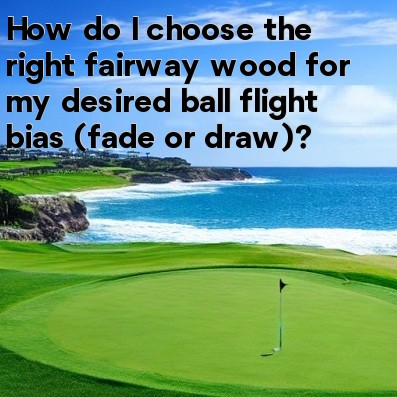
Choosing the Right Fairway Wood for Desired Ball Flight Bias
When it comes to selecting the right fairway wood, one important factor to consider is the desired ball flight bias, whether it be a fade or a draw. This decision can greatly impact your game and help you achieve more accurate shots. Here are some tips to help you choose the right fairway wood for your desired ball flight bias:
Understand Your Swing
Before diving into the selection process, it's crucial to understand your swing and how it naturally develops a ball flight. Some golfers naturally tend to hit fades, while others tend to hit draws. Identifying your swing tendency will provide a foundation for choosing the appropriate fairway wood.
Clubhead Design
The design of the fairway wood clubhead can have a significant impact on the bias of the ball flight. Manufacturers often produce fairway woods with different clubhead designs to cater to different swing tendencies. For players looking to fade the ball, a fairway wood with an open clubface design can help promote this flight bias. Conversely, for players seeking a draw bias, a fairway wood with a closed clubface design can aid in achieving the desired result.
Shaft Flex
The shaft flex is another essential element to consider when selecting a fairway wood for your desired ball flight bias. The flex of the shaft can affect the way the clubface squares up at impact. If you tend to hit a fade, opting for a stiffer shaft may help you square up the clubface slightly more for a straighter shot. Conversely, if you tend to hit a draw, a more flexible shaft might assist in allowing the clubface to close slightly for a more pronounced draw bias.
Club Adjustability
Many fairway woods now come with adjustable features that allow you to customize the club to your desired preferences. These adjustments often include changing the loft and altering the clubhead's weighting. By adjusting the loft, you can influence the trajectory and ball flight bias. Increasing the loft may promote a higher flight with a draw bias, while decreasing the loft can encourage a lower flight with a fade bias. Experimenting with these adjustable features can help you find the perfect fairway wood setup for your desired ball flight bias.
Continual Practice and Experimentation
Ultimately, choosing the right fairway wood for your desired ball flight bias is a process of trial and error. It's essential to continually practice and experiment with different clubs and setups to understand which combination works best for you. Working with a golf professional or club fitter can also provide valuable insights and guidance throughout this process, ensuring you make an informed decision.
Conclusion
Choosing the right fairway wood for your desired ball flight bias requires a deep understanding of your swing tendencies and the different factors that contribute to shaping the golf ball's trajectory. By considering the clubhead design, shaft flex, club adjustability, and conducting continual practice and experimentation, you can find the perfect fairway wood setup to enhance your game and achieve more accurate shots.





